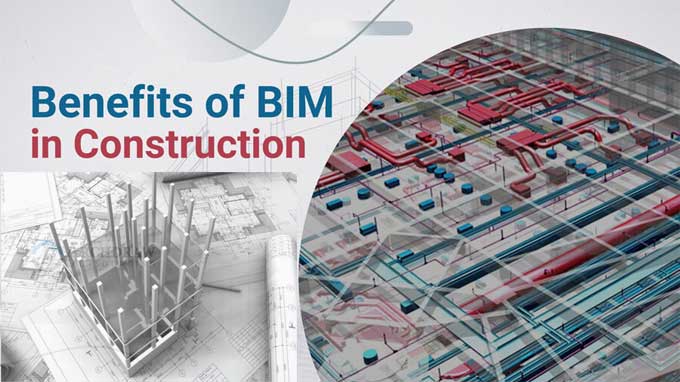5 Benefits of Building Information Modeling (BIM) is Beneficial in Construction
Tweet
A BIM-capable firm or contractor will be able to deliver a high-quality build that's more efficient and affordable. Considering the time and resources a project will require, one of the greatest challenges that clients face is predicting the amount of time and money a project will require.
BIM can remove some of the mystery surrounding a project's cost and construction timeline even if it is impossible to predict precisely how much a project will cost or how long it will take to complete.
Design and construction benefit from BIM in five key ways:
- Savings on resources and costs.
- A shorter project life cycle and greater efficiency.
- Coordinating and communicating more effectively.
- Modular and prefabricated construction opportunities.
- A higher quality of results.
1. Savings on Resources & Costs
The ability to predict construction costs with high accuracy long before construction begins is a very important benefit of BIM. Architects use this method to not only estimate project costs but also find ways to reduce costs. An architect can estimate costs by using tools such as BIM 360 Docs:
- The materials.
- Transporting materials.
- Prefabricating our shipping modular pieces.
- Construction timelines based on payrolls and labor.
- Choose more cost-effective materials.
- Time your purchase to take advantage of the lowest market price.
- Consider how much it would cost to prefabricate or to build on-site.
- Reducing total billable hours for the client by streamlining construction workflow.
- Prevent costly repairs or delays caused by human error.
2. A Shorter Project Life Cycle & greater Efficiency
Construction of a structure that completes faster generally takes less money overall. The sooner you complete a project, the sooner the occupants can use the space, and the higher your return on investment will be. Construction can begin earlier, and buildings can be designed faster with Building information modeling.
Additionally, workflow efficiencies and other efficiencies make the project move more quickly. A designer can, for example, use robots to prefabricate pieces in bulk. When contractors arrive on-site, they have to secure the pieces in place, saving time during construction.
3. Coordinating & Communicating more Effectively
A BIM model improves communication between contractors and architects as well as other stakeholders involved in the project. Because BIM uses a single point of truth, all relevant information, including models, estimates, and notes, can be distributed and stored from one place.
It is made available to everyone involved so that suggestions can add. Architects can find the best solutions with the help of data analytics and eliminate silos of information by using this collaboration.
The use of BIM on-site is yet another benefit. Building contractors can work with the latest plans and workflows thanks to BIM software. Conflicts reduce in this way. Seeing construction problems beforehand makes it easier for contractors to find solutions on-site.
Last but not least, Building Information modeling makes construction safer by utilizing communication systems. Through BIM, a designer or architect can predict and prevent construction hazards. In addition, contractors can guide their teams safely through each step of the workflow and document their actions, so the assessment on the job will be accurate and safe.
4. Modular & Prefabricated Construction Opportunities
A BIM tool creates detailed production models that can be prefabricated offsite. Furthermore, architects now create modular buildings that fit together perfectly and include complex tolerance calculations. Therefore, contractors are saving time and money due to less time spent on-site constructing pieces from scratch.
5. A Higher Quality Results
A client might also notice an improvement in build quality if BIM is using in the design or construction process. A more detailed and accurate design result achieves when using BIM.
A more aesthetically pleasing building may also achieve through the use of BIM's various visualization tools. Architects can visualize how the building will look in its final form and can even see how light will interact with the structure.
To get online demonstration, watch the following video tutorial.
Video Source: IMAGINiT Technologies
Wrapping it Up
Architects can achieve this goal by utilizing BIM from the outset, thus creating better design choices and keeping projects on a budget by optimizing labor, materials, and other resources. Using detailed 3D models and more efficient workflows, a company like Architects with experience using BIM can still achieve your desired results regardless of your budget.
These processes help architects design and construct innovative buildings of the future. By using BIM during the construction process, you can make the most of your resources. BIM construction is a great tool for building dynamic structures efficiently. BIM offers so many benefits that it continues to be an essential component in the construction process.

Gallery
Feel free to contact us for BIM requirements. One of our representative will respond you within 24 Hours. Send us your projects requirement today and grow your project.
Explore More !







